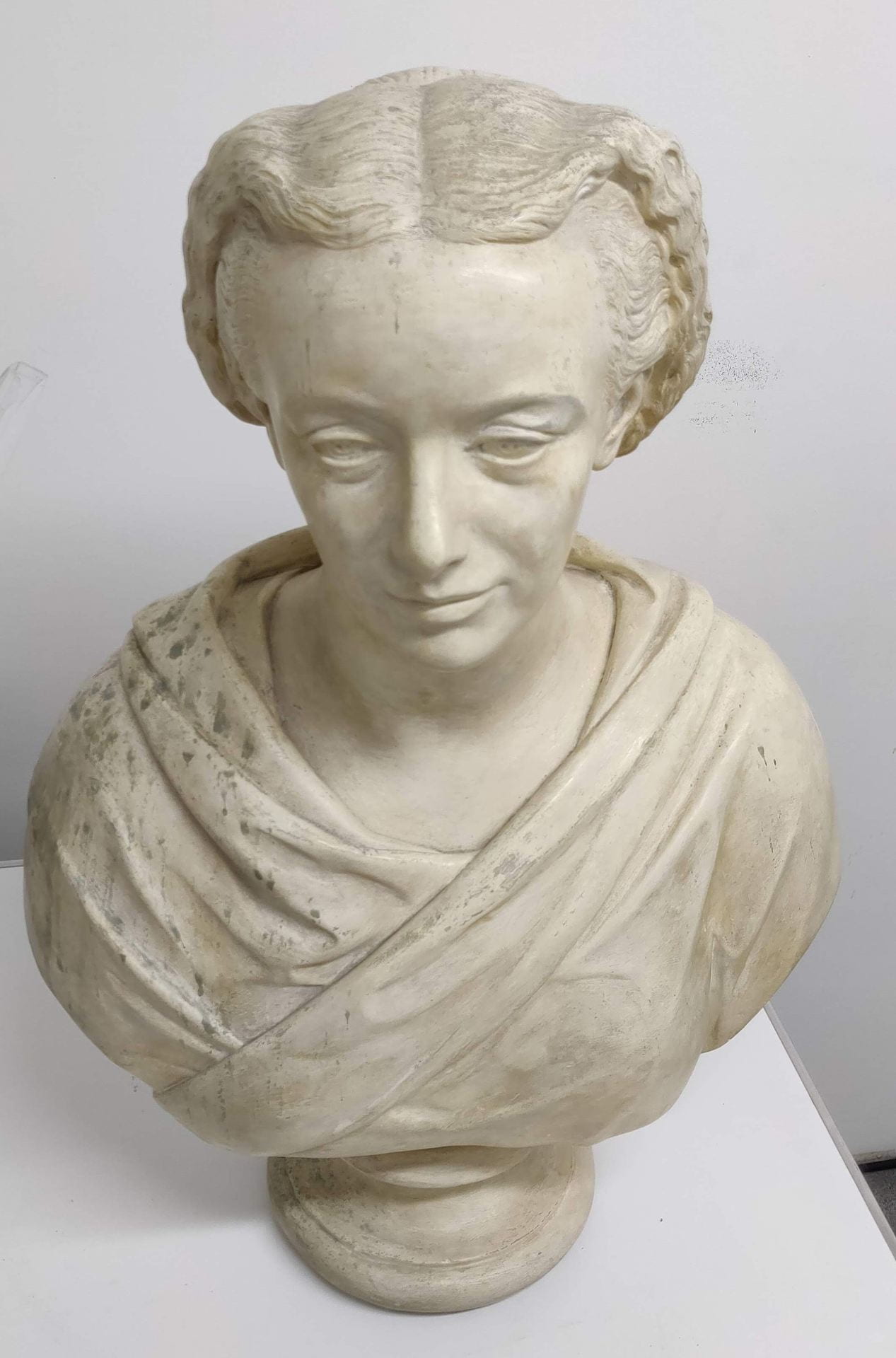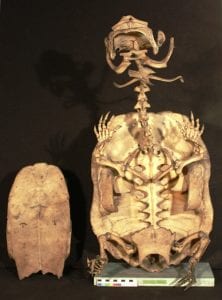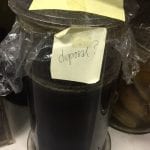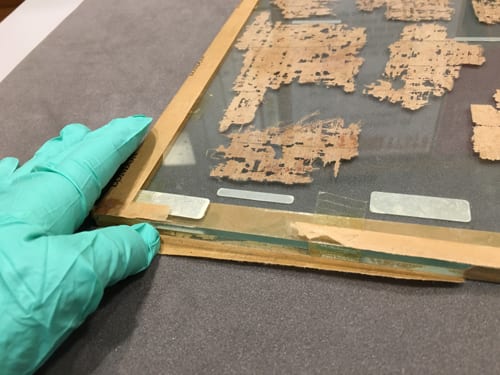This blog was written by Conservator Graeme McArthur from the UCL Culture Collections Management Team.
The closure of UCL’s campus during lockdown has provided new challenges for UCL Culture’s Collections Management team. We are responsible for taking care of the world-class collections of artworks, ancient artefacts, zoological and pathological specimens, instruments and scientific equipment held by the university. We make sure that these objects and specimens are available for use, study and exhibition by ensuring they are properly stored, handled, displayed and documented. But carrying out this important role usually requires us to be on site!
Usually we carry out regular programmes of cleaning, auditing and conservation as well as environmental monitoring and pest control. We work closely with our curatorial colleagues to agree new acquisitions and prepare objects for loan for exhibition in the UK and abroad. Our lovely team includes Collections Managers, Conservators and four Curatorial and Collections Assistants.
So how have we cared for our collections during lockdown? Well the very first thing we did was produce a risk register to highlight areas of concern when nobody is physically present in our museums and collection spaces. Here are some of the things we’ve been keeping an eye on.
Pests!
Some of UCL’s collections are an excellent food source for the larvae of insects such as beetles and moths. This is especially true of the feathers and fur that are prevalent in the Grant Museum of Zoology. It is vital to know if there has been a pest outbreak as soon as possible, by the time someone notices moths flying around there could already have been significant damage.
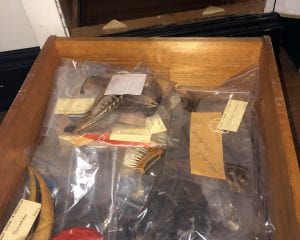
Image: A drawer full of feathers and other organic material in the Grant Museum, many pests would consider this to be a drawer full of food!
To this end we have sticky pest traps throughout all of our collection spaces. These will not remove a pest threat but enough will blunder onto them to give us an indication that there is a problem. Traps are placed on the edges of rooms where pests tend to run around as well as near particularly vulnerable materials. Of course to tell us anything these need to be checked regularly which became a problem once the UCL campus closed.

Image: Pest traps and the all-important grabber to position them behind furniture.
Environment
Understanding the environment in museums and object stores is vital to the long-term preservation of our collections. Extremes in light, temperature and humidity as well as rapid changes can all cause permanent damage. We have all seen what can happen to book spines if left next to a sunny window, but this can be stopped with something as simple as closing the blinds!
High humidity can promote mould growth and corrosion whereas low humidity can cause organic materials such as wood to shrink and crack. Knowledge of the materials in the collection allows us to make an informed choice on how we want to the environment to be, though it is not always possible to keep it that way.
Thankfully even though we have not been able to work on campus during this period we are lucky enough to have a system where data is sent to us remotely. We have sensors in all of our collection spaces and we can look at this data even whilst working from home. Without people in spaces and with lights off and the blinds closed the environment has been very stable. It is easier to keep objects safe when they are not seen or used for research, but then there wouldn’t be much point in having them!

Image: A day of environmental data from the Petrie Museum.
Flooding and leaks
Many of the UCL buildings are prone to the occasional leak. Most of the collections are well protected inside cases or cupboards, but even so if left for too long a leak can potentially cause damage. It is important to check the environmental data to look for an increase in humidity that could be caused by there being standing water in the room.
To reduce these risks, we have set up socially distanced fortnightly checks of all of our collections with two members of staff who can drive in to campus. This allows us to check all of the pest traps so any outbreaks can be discovered as soon as possible. Sometimes traps become so crowded that they need replacing so we can see what new pests have become stuck.

Image: Spiders caught in our pest traps
Unfortunately, the pests caught on traps tend to attract spiders who are actually very helpful in reducing pest numbers.
During our fortnightly visits we checked all the spaces, cupboards and drawers where objects are not visible to ensure there were no other problems.
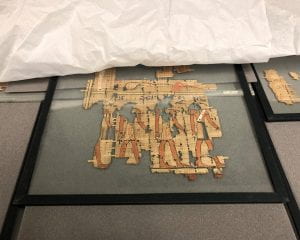
Image: Revealing a beautiful papyrus from the Petrie Museum storage
Adapting our ways of working
Working from home is an unusual situation for our team as we don’t normally spend most of our time in front of a screen! We have had to refocus to other areas, however this has allowed us to work on projects that there would not normally be time for. One of these is improving the collections database that is used as the base for our online catalogue. Over many years data has been entered in an inconsistent manner with fields being used differently by individuals and throughout different collections. We have now standardised how the fields should be used and begun to ‘clean’ the old data to remove inconsistencies. Once this is complete it will be more useful for us, the researchers and general public who use the online catalogue.
The campus has been eerily quiet during the checks but we are looking forward to welcoming back UCL students, staff and the general public in the near future!

Image: UCL campus
Filed under Conservation, Grant Museum of Zoology, Petrie Museum of Egyptian Archaeology, Uncategorized
Tags: behind the scenes, collection management, Collections, conservation, day in the life, from the stores, pest control, Petrie Museum, preservation, UCL Culture, UCL Museums
1 Comment »

 Close
Close








